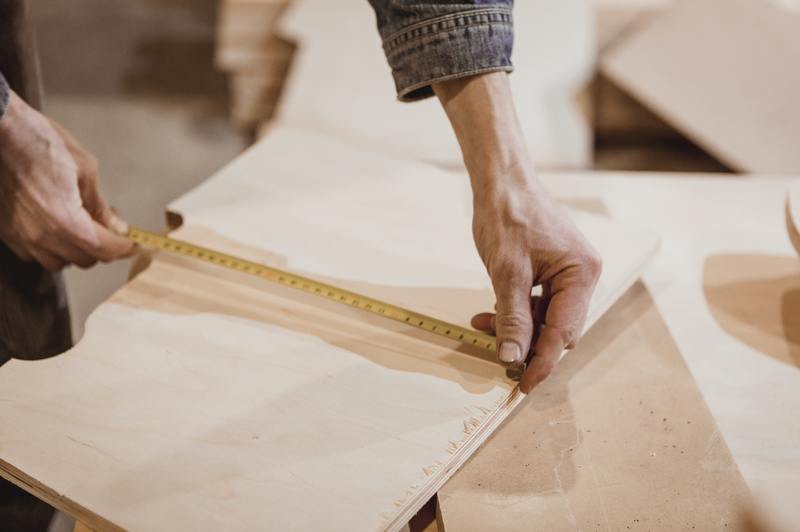Keeping in mind the process of how to remove mold from attic plywood allows you to clean off the fungi before it gives you adverse health effects. To do this, you will need to protect yourself with the right equipment, fix the source of moisture and dry the area, remove any affected insulation, and spray and scrub the mold.
These simple steps will help prevent the mold from spreading further into your house and keep it from damaging your property and health. Continue reading to learn more about the steps to remove the mold from attic plywood completely.

How To Clean Mold From Plywood In The Attic
Mold is an unpleasant and unwelcome surprise. Often, you can identify them by simply seeing the colored patches and spots, smelling the stench they produce or feeling the warm and stuffy once you enter your attic. Once you spot mold growth, you should take the following steps.
Step #1. Prepare your equipment
Cleaning up and dealing with mold in general puts you at risk of getting ill. According to the Center for Disease Control, mold can cause symptoms such as a clogged nose or itching skin and eyes, with symptoms being worse for people with compromised immune systems and respiratory ailments.
However, in more severe cases, mold spores can irritate the lining of your respiratory system and cause infections. Before attempting to clean up your attic, it would be best to wear protective equipment such as a breathing mask, rubber gloves, goggles, and, if possible, a full protective suit with a hood.
Most mold types will not require you to suit up fully; however, such is not the case for toxic black mold. Here is a helpful article to help you know what does toxic black mold look like.
You will also need plastic bags and a mold-killing solution for this project. To make the solution, combine one part white vinegar with one part water and place the mixture in a spray bottle. You can also use one part hydrogen peroxide and two parts water instead of the vinegar solution.
Step #2. Find the source of moisture
Mold requires two things to survive and thrive: moisture and fiber-rich organic material. As long as your home is dry and properly ventilated, mold will not grow anywhere.
However, leaks and excess moisture occur over time especially in the attic. Aside from a leaking roof, the attic becomes moist when it collects enough water vapor from every part of the house.
Once you suspect or identify mold growth, the first thing you should do to remove it is to dry the area. It would be best to find any leaks in the roof and dehumidify the attic.
Turning on a dehumidifier can quickly dry out the mold spores present in your attic plywood. However, this only renders the mold inactive and does not kill it. During the dehumidifying process, it would be best to seal off any windows, vents, and openings to prevent the spores from moving into other areas of your home.
Step #3. Remove wet or moist insulation
Due to the leak, humidity, or condensation after wintertime, your attic’s insulation materials may be damp or wet. As such, they have to be removed and replaced.
Place the wet and moldy insulators inside thick plastic bags and seal it tightly to avoid the spread of mold spores. Take these plastic bags outside immediately.
Step #4. Spray the area with a mold-killing solution
Now that the area is dry, you can begin treating the moldy areas. Spray the affected area of the plywood with your mold-killing solution and let it sit and dry for an hour.
Afterward, spray the affected area again. Scrub the mold off using a wire brush and then let the plywood dry again.
Step #5. Finalize
Now that the plywood is free from mold, you can now move on to cleaning everything else. Reopen the vents and the windows to allow proper ventilation and close them once it rains.
It would be best to apply mold-resistant primer and paint on the previously affected areas. Mold-resistant primers and paints can help curb the chances of any mold infestation reoccurring.
You can now reinstall new insulation and fix all the holes and leaks you found in step 2. Properly clean and dispose of any materials used in cleaning.
If you find that the mold has spread from your attic plywood to your walls, you might still be able to clean it yourself. Here is a complete guide on how to remove mold from inside walls easily.
This five-step process works in most cases. However, if the mold infestation is severe and extensive or if the plywood mold comes back, it would be best to contact a mold remediation and removal specialist.Large infestations pose serious health risks and are best handled by professionals.
Conclusion
Knowing how to remove mold from attic plywood yourself will save you thousands of dollars from remediation services and hospital bills. All it takes is a five-step process and your attic and your home will once again be safe and comfortable to live in.
